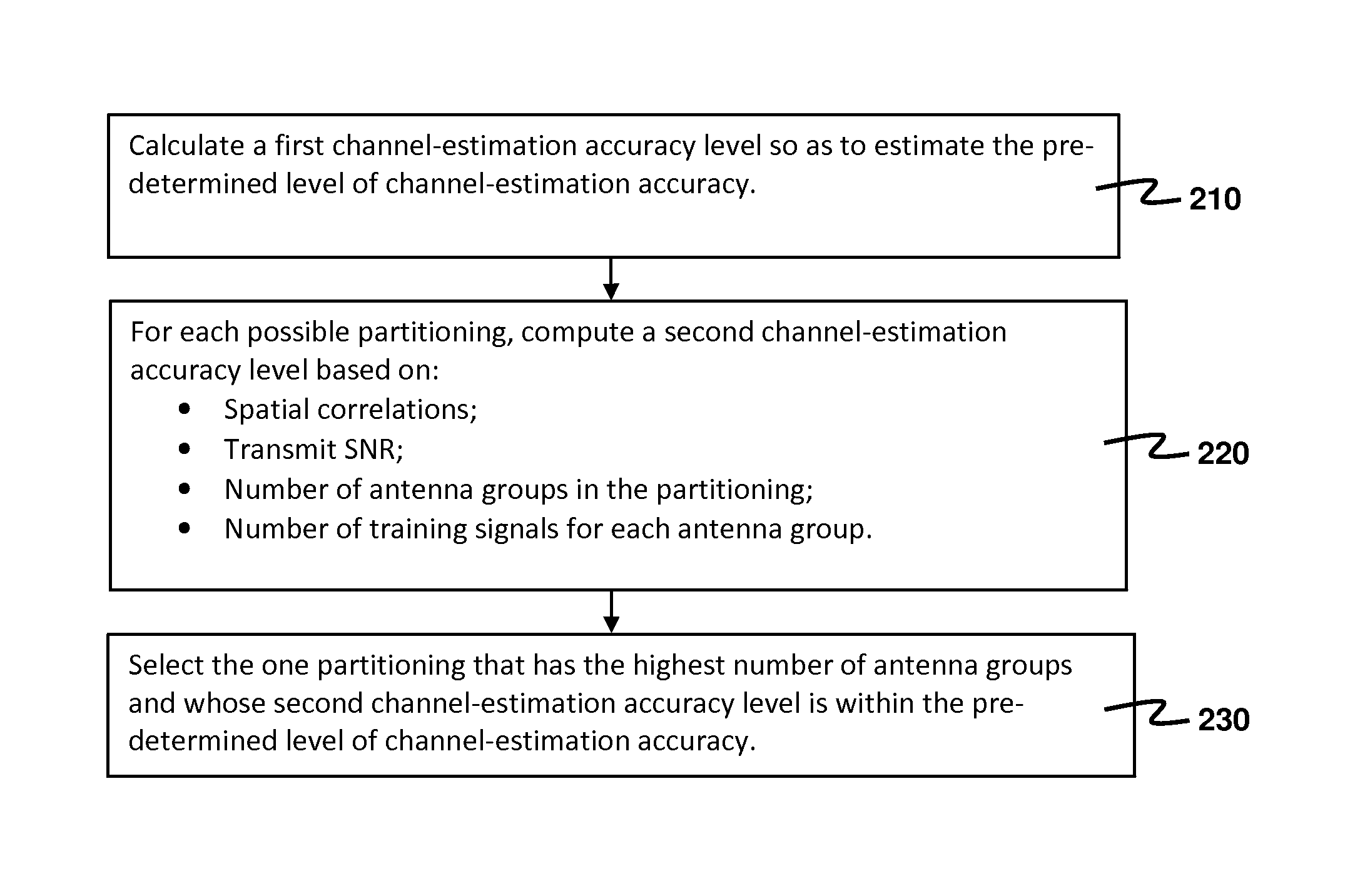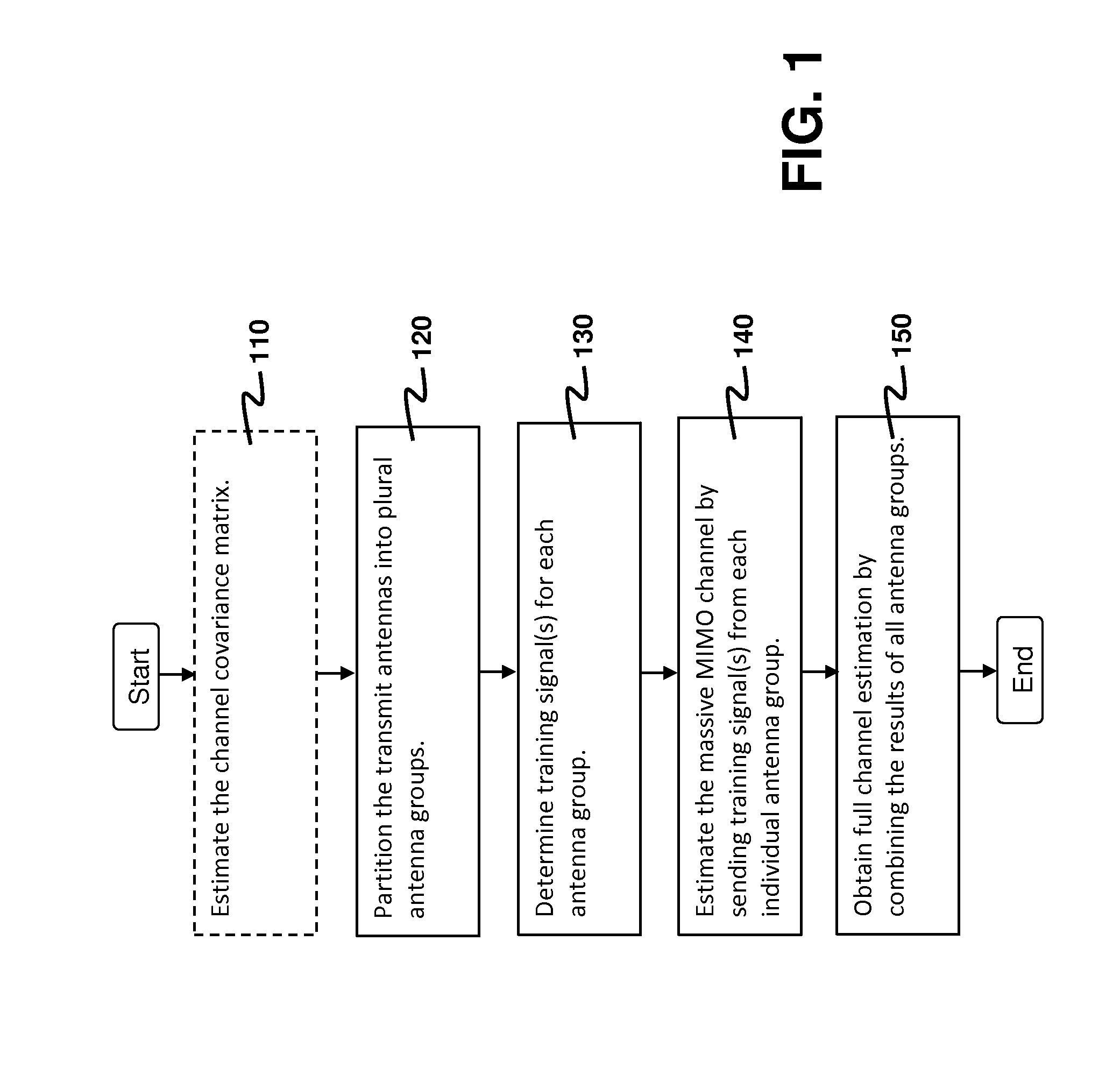Method and apparatus for channel estimation in massive MIMO systems with dynamic training design
- Summary
- Abstract
- Description
- Claims
- Application Information
AI Technical Summary
Benefits of technology
Problems solved by technology
Method used
Image
Examples
Embodiment Construction
[0014]An aspect of the present invention is to provide a method for estimating a massive MIMO channel. The method is developed based on the following observations.
[0015]Consider a massive MIMO channel on which a first communication device having N transmit antennas communicates with a second communication device having a single receive antenna. Let h be an N×1 complex channel-gain vector of the massive MIMO channel, and R be a channel covariance matrix given by R=E{hhH} where (•)H denotes complex conjugate transpose. It is assumed that R is known to both the first and the second communication devices, and that it remains approximately invariant during a long period. Moreover, h remains invariant during a shorter period within which estimation of h is performed. This period is commonly known as the channel coherence time. It is desired to estimate h by sending one or more training symbols from the N transmit antennas to the second communication device.
[0016]A known technique for esti...
PUM
 Login to View More
Login to View More Abstract
Description
Claims
Application Information
 Login to View More
Login to View More - R&D
- Intellectual Property
- Life Sciences
- Materials
- Tech Scout
- Unparalleled Data Quality
- Higher Quality Content
- 60% Fewer Hallucinations
Browse by: Latest US Patents, China's latest patents, Technical Efficacy Thesaurus, Application Domain, Technology Topic, Popular Technical Reports.
© 2025 PatSnap. All rights reserved.Legal|Privacy policy|Modern Slavery Act Transparency Statement|Sitemap|About US| Contact US: help@patsnap.com



